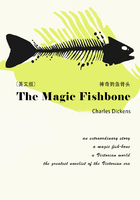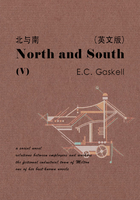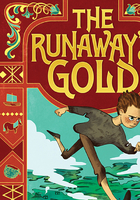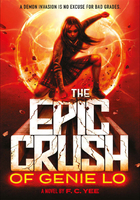The scene is the silent witness
Peter Arnold, crime scene specialist
'Code Zero. Officer in need of assistance.' It's the call sign every British police officer dreads. One grey November afternoon in Bradford in 2005, PC Teresa Millburn's broken words on the radio sent a chill round the West Yorkshire Police control room. Her message heralded a case that touched everyone in the police community. That afternoon, the fear that cops live with every day became a bleak reality for two women.
Teresa and her partner, PC Sharon Beshenivsky, just nine months into the job, were near the end of their shift in their patrol car, their task a roving, watching brief. There to intervene in minor incidents. To be a visible presence on the streets. Sharon was looking forward to getting home for her youngest child's fourth birthday party and, with less than half an hour till she and Teresa clocked off, it looked like she would be in time for the cake and the party games.
Then, just after half-past three, a message came through. A silent attack alarm linked directly to the police central control had been set off in Universal Express, a local travel agent's shop. The two women would be passing anyway on their way back to the station, so they decided to take the call. They parked up opposite the shop and crossed the busy road to the long single-storey brick building, its picture windows obscured by vertical blinds.
As they reached the shop, they came face to face with a trio of armed robbers. Sharon was shot in the chest at point blank range. Later, at the trial of Sharon's killers, Teresa said, 'We were a stride apart. Sharon walked in front of me. Then she stopped. She stopped dead – she stopped that quickly that I overstepped. I heard a bang and Sharon fell to the ground.'
Moments later, Teresa was also shot in the chest. 'I was lying on the floor. I was coughing up blood. I could feel blood running down my nose and blood over my face, and I was gasping for breath.' Yet she managed to press the panic button and alert the control room with those fateful words 'Code Zero'.
Peter Arnold, a Crime Scene Investigator (CSI) for the Yorkshire and Humberside Scientific Support Services, heard the code call on the radio. 'I'll never forget it. I could see the scene from the police station; it was literally just up the road. And suddenly there was a sea of police officers running up the road. I've never seen so many police officers running at one time, it was like a fire evacuation.
'At first I didn't know what was going on. Then I heard over the radio that someone had been shot, possibly a police officer. So I just ran too. I was the first CSI to the scene. I wanted to support the officers in terms of getting the cordons up, making sure we'd got the scene preserved, because it was very emotive at the time, as you can imagine, and we just needed to bring some order to that.
'I spent the best part of two weeks processing that scene. Some very long hours. I'd start at seven in the morning and wouldn't get home till midnight. I remember being absolutely exhausted afterwards, but at the time I didn't care. That will live with me forever. I'll never forget that scene. Not because it was so high profile but because it was so personal, because it was a colleague that had been murdered. The fact that Sharon was a police officer made her part of my family. Others who knew her were even more upset, but they all swallowed their grief and got on with the job.'
'And we had some very good forensic results that really contributed to the case as well, not just at that scene but at the peripheral scenes as well: the getaway vehicles and the premises they went to afterwards.'
The men responsible for the armed robbery that left Sharon Beshenivsky's husband a widower, and her three children motherless, were later brought to trial and jailed for life. The conviction was mainly down to the work of CSIs and other forensic experts, people who find evidence, interpret it and eventually present it in court. We will follow that evidential journey in this book.
Every sudden violent death carries its own story. To read it, investigators begin with two primary resources – the crime scene and the body of the deceased. Ideally they discover the body at the scene; looking at the relationship between the two helps investigators reconstruct the sequence of events. But that's not always the case. Sharon Beshenivsky was rushed to hospital in the forlorn hope that she might be resuscitated. Other fatally wounded people sometimes manage to make their way some distance from where they were attacked. Some killers move the body, either with the intention of hiding it or simply to confuse detectives.
Whatever the circumstances, scientists have developed methods that provide detectives with an array of information to read the story of a death. To make that story credible in a court of law, the prosecution has to show that the evidence is robust and uncontaminated. And so crime scene management has become the front line in the investigation of murder. As Peter Arnold says, 'The scene is the silent witness. The victim can't tell us what happened, the suspect probably isn't going to tell us what happened, so we need to give a hypothesis that explains what has taken place.'
The accuracy of such hypotheses has developed in tandem with our understanding of what it's possible to learn from the scene of the crime. In the nineteenth century, as evidence-based legal proceedings became the norm, the preservation of evidence remained rudimentary. The notion of contamination wasn't part of the reckoning. And considering the narrow limits to what scientific analysis could achieve, this wasn't such a big problem. But the limits expanded as scientists applied their increasing knowledge in practical ways.
One of the key figures in the understanding of crime scene evidence was the Frenchman Edmond Locard. After studying medicine and law in Lyons, he opened the world's first crime investigation laboratory in 1910. The Lyon police department gave him two attic rooms and two assistants, and from these cramped beginnings he grew the place into an international centre. From an early age Locard had been an avid reader of Arthur Conan Doyle, and was particularly influenced by A Study in Scarlet (1887), in which Sherlock Holmes makes his first appearance. In that novel Holmes says, 'I have made a special study of cigar ashes – in fact, I have written a monograph upon the subject. I flatter myself that I can distinguish at a glance the ash of any known brand, either of cigar or of tobacco.' In 1929, Locard published a paper on the identification of tobacco by studying ashes found at a crime scene, 'The Analysis of Dust Traces'.
He wrote a landmark 7-volume textbook on what he called 'criminalistics', but probably his most influential contribution to forensic science is his simple phrase, known as the Locard Exchange Principle: 'Every contact leaves a trace.' He wrote: 'It is impossible for a criminal to act, especially considering the intensity of a crime, without leaving traces of his presence.' It might be fingerprints, footprints, identifiable fibres from his clothing or his environment, hair, skin, a weapon or items accidentally dropped or left behind. And the converse is also true – the crime leaves traces with the criminal. Dirt, fibres from the victim or the scene itself, DNA, blood or other stains. Locard demonstrated the power of this principle in his own investigations. In one case, he unmasked a killer who appeared to have a solid alibi for his girlfriend's murder. Locard analysed traces of pink dust found among the dirt under the suspect's fingernails and proved that the powder was a unique make-up made for the victim. Confronted with the evidence, the killer confessed.
The influence of dedicated laboratory scientists continues apace. But without the initial fastidious work at the crime scene, science has nothing to work on. One unlikely pioneer of reading a crime scene like a narrative was Frances Glessner Lee, a wealthy Chicago heiress who founded the Harvard School of Legal Medicine in 1931, the first of its kind in the US. Lee constructed a series of intricate replicas of actual crime scenes, complete with working doors, windows, cupboards and lights. She christened these macabre dolls' houses 'Nutshell Studies of Unexplained Death' and used them in a series of conferences on understanding crime scenes. Investigators spent up to ninety minutes studying the dioramas and were then invited to write a report on their conclusions. Erle Stanley Gardner, the crime writer whose Perry Mason mysteries were the basis for a long-running TV series, wrote: 'A person studying these models can learn more about circumstantial evidence in an hour than he could learn in months of abstract study.' The eighteen models are still being used for training purposes more than fifty years later by the Office of the Chief Medical Examiner of Maryland.
While Frances Glessner Lee would recognise the principles of modern crime scene management, most of the details would be alien to her. Paper suits, nitrile gloves, protective masks – all the paraphernalia of modern CSI work has given it a rigour that early criminalists only dreamed of. Such was the rigour that was brought to bear on Sharon Beshenivsky's murder; a textbook example of investigators following every promising lead to its conclusion. As always, detectives relied heavily on the information supplied by the forensics team.
At the front line in this process are the CSIs. They start their career path on a residential development programme that gives them a grounding in basic skills and techniques for identifying, collecting and preserving evidence. When they return to their base, they are closely mentored while they build up on-the-job experience, starting with lower level crime and working their way up to more difficult cases as they acquire knowledge and skills. They have to provide a portfolio of evidence over time to demonstrate their competency.
We've seen enough crime scenes processed on TV. We all think we know how it's done; the white-coated professionals painstakingly photographing, bagging and preserving vital evidence. But what is the reality? What do CSIs really do? What happens after a body has been discovered?
Generally, the first police to arrive are in uniform. The decision on whether the death in question is suspicious rests with a plain-clothes officer of the rank of Detective or above. Once the detective has determined that it could be a homicide, the scene is preserved for the CSIs. The police withdraw, set a perimeter with cordon tape and start a scene log. Anyone who enters or leaves the scene is recorded, so every possible source of contaminated evidence is listed.
A lead detective takes charge of the investigation. All CSIs are accountable to them, and the buck stops with them. The lead detective decides what they need as far as CSI response and evidence collection, but the DA may later request another testing closer to trial.
Peter Arnold is a trim bundle of energy with the sharp eyes of a blackbird and an obvious enthusiasm for his job. An Area Forensic Manager in the UK, he oversees CSIs, advises detectives and coordinates scientific resources, and his unit serves four separate police forces. They are the UK's biggest scientific support service outside the London Metropolitan Police, with a staff of around 500. They work a 24-hour shift pattern to provide a round-the-clock service to detectives investigating every type of crime imaginable. The service is based just off the M1 near Wakefield, in a custom-built centre named after Sir Alec Jeffreys, the father of DNA profiling. It overlooks a manmade lake whose rural tranquillity is in sharp contrast to the cutting-edge science that happens inside the building.
'As soon as I get that first call, I start coordinating resources,' says Peter. 'If it's an indoor scene, there's not so much of a hurry because nothing's going to get snowed on, nothing's going to get rained on; it's now a sterile, preserved scene and we will deal with it in a more considered manner. But if it's an outside scene, it's the middle of winter and it's about to throw down with rain, I'll get staff to the scene immediately to recover evidence before it gets destroyed.'
Because the primary scene of Sharon Beshenivsky's murder was out of doors, on a busy street, preserving the evidence was a priority. But that wasn't the only concern for Peter and his colleagues. 'People think of a crime scene, singular. But often we can end up with five or six relevant scenes for a homicide – where a person has been killed, where the suspects have gone afterwards, a vehicle that the suspects have travelled in, where the suspects are arrested and, if the body is removed, where it ends up. All of those different scenes need to be processed separately.'
The first issue for CSIs working these scenes is security. It may be that someone's been shot and the suspect is still at large. CSIs don't wear stab vests, or carry guns, Tasers or handcuffs. They're not trained to arrest violent people, even though they are often dealing with scenes left by them. So, if necessary, armed officers are deployed to protect the CSIs.
After safety comes preservation. Peter explains, 'We might arrive at a scene where a house is cordoned off but the suspects have run up the road and got into a getaway car. If we've still got cars driving on that road they could be driving over bullets or bloodstains or tyre marks. So it would make sense to cordon off the whole street till we can collect the evidence.'
Once the cordon is in place the crime scene investigator puts on her full protective equipment: a white scene suit; a hairnet or hood; two pairs of protective gloves (because some liquids can seep through the first pair); and overshoes. She also puts on a surgical mask so she doesn't contaminate the scene with her DNA and to protect herself from biohazards – blood, vomit, faeces and the like.
She then walks through the scene, putting stepping plates down on the floor to protect the surface. On her first pass through she will look for evidence that may help identify offenders quickly. She will fast-track this kind of 'inceptive' evidence. For example, a fingerprint in blood on a window that the offender has climbed out of, or drips of blood going out of the house and down the street. In the UK, it's possible to get a DNA profile in just nine hours on a straightforward bloodstain, and the cost goes down depending on the turnaround time required.
In the US, it varies depending on the jurisdiction, but even top-priority jobs can take a few days and some can take months. Despite the beefing up of laboratory equipment and personnel, the increasing demand for DNA analysis has grown even quicker, and law enforcement is faced with a backlog of cases. As Peter observes, 'We have to think about what is needed to get us the results we need. Some of the things you see routinely on the TV happen once in a blue moon. They are generally a last resort. But timings are important in legal terms. Forensic teams need to sleep in order to perform properly. But once the police arrest a suspect, their custody clock is ticking and it's our job to provide results from inceptive evidence that inform their decisions about charging someone. There's always a balancing act going on.'
While these management decisions are being considered, the work at the scene continues. CSIs stand in each corner of a room and take a photograph of the opposite corner. They cover every aspect of every room, including the floor and the ceiling, so that if they move a piece of evidence they can see where it came from. Sometimes nothing will seem relevant, then, ten years down the line, a cold case review team will spot something crucial.
CSIs can also put a rotating camera in the middle of a room. It takes a series of photos which software then stitches together, enabling a jury to visualise walking around the room, and looking at particular objects. They can even click on a door and go through to the next room. 'For example,' says Peter, 'if several bullets have been fired through a window and have gone through walls and hit someone inside a house, you can scan the room and at a later date you can step back virtually from the house and show the trajectory of the bullets very, very accurately – to the point where you can show where the shooter was standing.' In this way, two key scenes of actions – the street outside and the place of impact inside – can be linked for the benefit of the jury.
Similarly, right from the start that afternoon in Bradford, CSIs were dealing with the street where the gunmen struck, and the interior of the travel agency, where staff had been threatened, pistol-whipped and tied up. In the street, there were bloodstains that had to be photographed and analysed by blood spatter specialists, to corroborate witness accounts of what had happened and in what order. A fingertip search revealed three bullet casings from a 9 mm handgun – one of the standard firearms used by career criminals, easily obtained even in the UK where guns are illegal.
Inside the travel agency, a careful search produced a handful of key pieces of evidence: a laptop bag that had been used to conceal the guns; a knife wielded by one of the men; and a bullet embedded in the wall. Ballistics experts identified the type of gun the bullet had been fired from. Nowadays, gun barrels have spiralled grooves – 'rifling' – running down their inside, which encourages bullets to spin, and hence fly more accurately. Each gun model has slightly different rifling. Back in Bradford, having examined the nicks and scratches on the bullet from the wall of the travel agency, the ballistics experts were able to determine that the bullet had been fired from a MAC-10. Later they explained that the MAC-10 had probably jammed, which might well have saved lives that afternoon.
Though the experts in Bradford would have been using powerful microscopes and vast digital databases in their identification, as a branch of forensics, ballistics has its roots in nineteenth-century detective work. Back then bullets were made in individual moulds, often by the owner of the gun, rather than mass-produced in factories. In 1835, Henry Goddard, a member of the Bow Street Runners (the first detective force in the UK), was called to the house of a Mrs Maxwell in Southampton. Joseph Randall, her butler, claimed that he'd been in a shoot-out with a burglar. He said he'd fought him off at the risk of his life. Goddard noted that the back door had been forced, and that the house was in disarray, but he was suspicious all the same. He took Randall's gun, ammunition, moulds, and the bullet that had been fired at him, and discovered that they all matched: the bullet had a tiny round bump that corresponded to a similar-sized flaw in Randall's mould. Confronted by this evidence, Randall confessed that he had staged the whole event in the hope of getting a reward from Mrs Maxwell for his bravery. This was the first time a bullet had been forensically traced back to a particular gun.
The scene may be the silent witness to the crime, but there are often human witnesses whose evidence can provide leads. In the Sharon Beshenivsky case, witnesses revealed that the robbers had made their getaway in a silver 4x4 SUV. At once, the traffic police began scanning local CCTV footage. They soon spotted the vehicle and identified it as a Toyota RAV4. A few months earlier, that could have been the end of the story. But earlier in 2005, Bradford had become one of the first cities in the UK to install a ring of cameras that recorded every vehicle entering and leaving the city. Up to 100,000 images a day were taken and stored by the Big Fish programme.
The police lost track of the vehicle when it left Bradford city centre. But when its number plate was put into the national Automatic Number Plate Recognition system (ANPR), analysts were able to tell detectives that the silver 4x4 had been hired at Heathrow airport. Within hours, the Metropolitan Police had found the getaway car and arrested six suspects.
But again, the Bradford detectives' luck seemed to have run out. The six men who were arrested were quickly able to prove that they'd had no part in the fatal robbery in Bradford. They were released without charge. It looked like the police had hit a dead end.
Once more, the CSIs came to the rescue. Once processed, a search of the RAV4 revealed rich sources of evidence: a Ribena drink carton, a water bottle, a sandwich pack and a till receipt. The receipt came from the Woolley Edge service area on the M1 south of Leeds. It was timed at 6 p.m., barely two hours after the fatal encounter between the gunmen and Sharon Beshenivsky. All these items were classic examples of inceptive evidence that can be fast-tracked for speedy identification.
When police examined the CCTV footage from the shop at the service station they spotted a man buying the items found in the RAV4. Meanwhile, those items were being examined for fingerprints and DNA and, when the results were run through national databases, the police found the names of six suspects, all connected to a violent criminal gang in London.
Now, it was only a matter of time before the guilty men were tracked down. Three of them, who had acted as drivers and lookouts during the robbery, were convicted of robbery and manslaughter. Two were convicted of murder, and given life sentences. One had managed to flee the country to his native Somalia dressed in a burkha, pretending to be a woman. But West Yorkshire Police refused to give up and, after an undercover Home Office extradition, finally he too stood trial and was sentenced to life in prison. Sharon Beshenivsky's law enforcement family never laid down. They made sure that every available resource was thrown into the hunt for justice.
CSI teams don't just pull out the stops for the headline cases. In volume crime cases, like burglary, if there is a realistic chance of recovering forensic evidence and identifying an offender they consider DNA swabbing, fingerprinting, footprint analysis. Sometimes they get an answer from one test that means they don't have to do any more complicated tests on that item. If they find fingerprints on a knife that's been used in a stabbing, they don't need to look for DNA on it. Peter explains, 'We don't want to be doing the really space age stuff when we can get the result we need by simpler and cheaper means.' This principle is occasionally passed over by some officers who enthusiastically watch TV crime dramas. Forensic scientist Val Tomlinson says, 'It can be your Senior Investigating Officer who's not had a lot of time on the ground. I remember going to one scene where a man was sitting dead with a knife in him and the SIO said, "Oh, so you will be doing metal analysis on the edges of the cut so that you can show it was that knife?" And I said, "Maybe that's not our priority given the knife is sticking out of him."'
But when the space age stuff needs to be done it can be done, as many cases in this book will show. Peter is particularly fond of the UK National Footwear Database, which can link scenes together through footprints. He used it recently after finding a rare footprint at the scene of a sexual assault. The print had been found at a few other crime scenes throughout West Yorkshire, and the coincidence made the police focus their attention on the man who was eventually convicted.
For Peter, it is the successful cases that stick longest in the mind. 'I remember one where we had a really good result, which isn't something you get every day. One of our CSIs went to photo-graph a woman who had been badly beaten up and was in intensive care. The woman subsequently died from her injuries but when the CSI saw her, he noted some odd shapes on her face. So we sent out one of our specialist imaging officers who took more shots using ultraviolet and infrared. When the photos were examined, we could see they were clear impressions of trainer soles.
'Later, when we recovered the suspect's shoes, not only did we find blood on them but our footwear expert could state that the victim had been stamped on at least eight times, because he could point out the same pattern in at least eight different orientations. His evidence made it clear that she had sustained a drawn-out attack. The suspect claimed he might have "accidentally stepped on her face". But I think the reason he got handed down a high sentence in court was the unequivocal forensic evidence.'
At the end of the long process of crime scene investigation lies the courtroom, where the evidence Peter and his colleagues collect is tested to its limits by lawyers and weighed in the balance by judges and juries. It's about as far from the dispassionate world of the scientist as it's possible to imagine. And it is no respecter of persons, as Peter recalls.
'I do remember being cross-examined in the witness box for about three hours on one occasion. There was clear DNA evidence that implicated the suspect for a violent robbery of a woman. But I would have to say I'd gone to unusual lengths to locate and recover this evidence. Perhaps above and beyond what you would normally expect.
'There could be no challenge on the DNA itself, but the defence took the line that I had planted this evidence. My integrity was what had to really withstand the test, and that was where documentation became really important. I was able to produce the original photographs taken before I touched or moved anything, so the jury could see the pristine scene. The photographs were taken sequentially as I recovered the items and eventually we got to the item that produced the DNA profile. The jury could see exactly what I did, what order I did it in, the unique identifiers on the item.
'Then I was challenged over whether someone had tampered with it afterwards. But I was able to document every process it had gone through. There was a clear chain of continuity. Still the attack went on. I ended up putting on a scene suit, a mask, gloves and a hairnet and placing a sterile piece of paper out in the courtroom. Then I opened up the exhibit. I showed it to the jury then showed my photographs to show that it was the exact same exhibit with the exact same unique identifiers. The evidence stood up to the test, but it showed me the lengths that a defence will go to to try and get the client off.
'I found that quite annoying personally, but I actually see the need for an adversarial system. I was challenged but ultimately that strengthened the case because it was clear that there were no issues with the evidence. Ten years down the line we're not going to have an appeal in that case saying the evidence could have been tampered with. I'd rather get it out in the open now. Let's challenge it now, let's face the scrutiny.'
Technology has come a long way. But there is still a distance to go. And we creators of fictitious murder don't always help, as Peter confirms. 'The public's expectations are often raised by what they see on TV. When we turn up and explain why we can't examine something, sometimes they just don't believe us. We end up feeling like the bad guy because we can't deliver what they're expecting.'
Peter is referring to the 'CSI effect', named after the famous TV series CSI: Crime Scene Investigation, which some say has distorted the public perception of what forensic science is capable of doing. DNA evidence, in particular, has come to be seen by quite a few jurors as indispensable evidence. However, the extent of the CSI effect is disputed by many, who instead see it as a sign that ordinary people are getting a basic grip of what forensic science is doing, even if it is an imperfect one. When experts and judges do their job properly, they can help juries understand the significance of different types of evidence.
In one extraordinary case in Wiltshire in 2011, a crime victim copied a trick she'd seen on an episode of CSI, to help the forensics team she hoped would investigate. For months, a man had been prowling around Chippenham in his car. He would identify a woman, pull on a black balaclava and gloves, and drag her into his car. Then he would drive off, sometimes to a disused barracks, where he would rape her, and then force her to clean herself with towels to destroy the forensic evidence. He was caught out when his final victim tore out some strands of her own hair and left them in his car, before he let her go. She told the police that, whether or not she survived, she knew there would be an investigation, and that this would provide DNA evidence. 'I've always been a fan of CSI programmes. I've watched so many of them, I know what to do and how things work.' With the help of her hair, and the spit that she'd also deposited on the car seat, Lance-Corporal Jonathan Haynes was convicted of six rapes.
In certain ways Peter Arnold thinks that British CSIs should be more like their TV counterparts. 'We really need a decent mobile data solution for CSIs which will enable them to have proper IT access at the scene to process information and record exhibits so they don't have to keep coming back to their base, which wastes a lot of time. That sounds really easy, doesn't it? Because I can walk around with my iPhone and I can have all sorts of things available at my fingertips. But there's the costs of developing and providing the software. We haven't got millions of pounds to develop an app for CSIs. And then there's the issue of data security.
'But if we can develop real-time forensics, what a difference that could make. If somebody's house gets broken into and we find some potential DNA evidence, we've still got to get that DNA evidence from the crime scene via a courier to the lab. It's got to be booked in and finally it's got to be processed. Currently we are fast-tracking certain evidence from burglary scenes, turning DNA around within nine hours because burglary is such a priority. Why wait two or three days to get a burglar's ID when you can have it in nine hours, get them in custody and stop them burgling someone else tonight? So we're using major crime principles for volume crime. Similarly with fingerprints. We've really speeded that up, but if we could scan the print at the scene that would speed it up even more.
'Imagine this. If we get to a burglary within an hour and we examine it within half an hour, we could potentially have a burglar's name within an hour and a half of the crime being discovered. The police then go and knock on their door and they're still there with the stolen property in the bag. So the victims get their stuff back. And the burglars start to understand there's no point.'
As well as the satisfactions, the job comes with stresses and pressures. We make high demands on the people we expect to deliver justice, and we don't always appreciate how much it eats away at them. Peter Arnold says, 'We see some of the worst things that mankind can do to each other and I still get shocked by some of the things that occur. Most people can go home and talk to their families about what they've done at work. We can't. But even if I could, I don't want my family to know some of the things that I've seen.'













